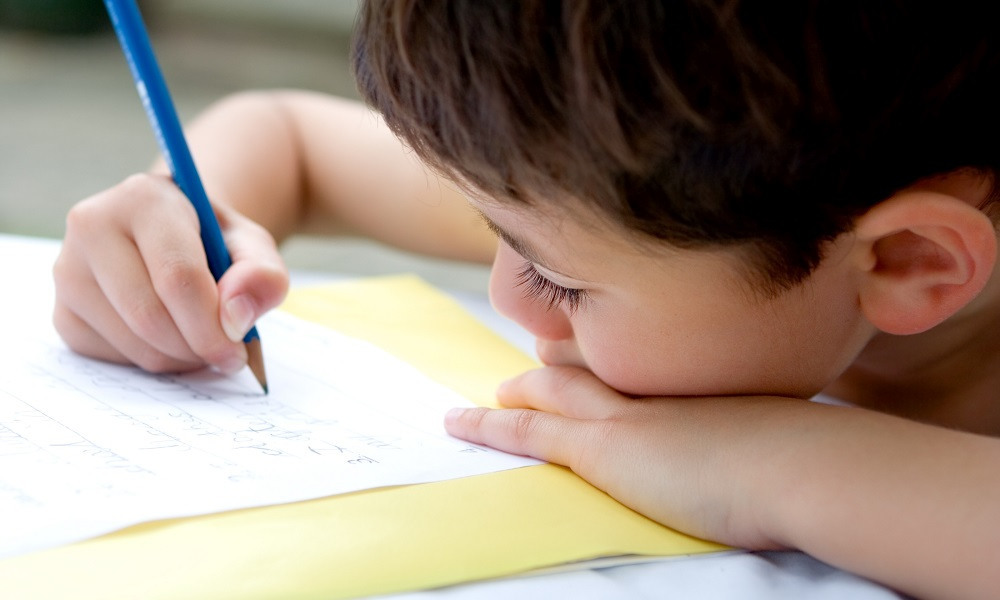Early years classroom practitioners need to devote more time to teaching writing, including explicit handwriting instruction, according to research findings from an Australian study.
A team from Murdoch University, Perth, examined the handwriting abilities of Kindergarten students in seven government primary schools in Western Australia, and the amount and type of writing instruction delivered by their teachers. They found writing instruction was ‘highly variable' across the 23 classrooms.
The research was carried out by Dr Anabela Malpique and Dr Deborah Pino-Pasternak and PhD candidate Debora Valcan. They focused on the children's handwriting automaticity – the ability to access, retrieve and write the letters of the alphabet automatically and legibly – as evidence suggests this is related to the development of effective writing skills.
The study is part of a larger longitudinal project. It involved 177 children and 23 teachers and data were collected in the last term of the Kindergarten year in 2015.
Youngsters were asked to write all the letters of the alphabet in order, in lower case, in one minute. They were told to go ‘as fast and carefully' as they could and to keep going if they made a mistake.
Discussing the findings with Teacher, Malpique and Pino-Pasternak say, as expected in early years writing development, there were a large number of reverse letters in the alphabet task. The average performance was 9.70 letters in one minute. ‘Nine out of the 177 children were not able to write a single letter, and only one child was able to write the 26 letters of the alphabet in the time provided.'
The academics say it was particularly ‘worrisome' that 28 per cent of children were unable to write more than five letters in one minute by the end of Kindergarten.
A large number of children sang their ABCs before and during the task. Malpique and Pino-Pasternak believe this was to help them retrieve the letters. ‘It would be interesting to look at different strategies children use in the early years to recall their ABCs and any correlations with their handwriting automaticity, as measured by the ABC task.'
The study also assessed the children's reading skills, including their phonological awareness and decoding skills. Malpique and Pino-Pasternak explain that international research shows correlations between word reading and handwriting automaticity in Kindergarten. ‘In other words, children with higher handwriting automaticity scores also have higher word reading scores. Findings from our study corroborate this.'
The 23 teachers involved in the study were asked to complete a survey assessing the amount of time they spent developing writing skills and the type of instruction. ‘We wanted to understand the frequency with which teachers reported teaching lower-order skills – handwriting, spelling, and grammar, and higher-order skills – planning and revising strategies.'
Again, there were big variations between classrooms. Both the amount of time students spent writing and the amount of time teachers spent on writing instruction ranged from 20 minutes to five hours per week. ‘In classrooms where teachers reported spending more time to teach writing per week, more time was allocated to teaching lower-order skills than to teaching higher-order skills.'
Overall, the majority of teachers (57 per cent) reported teaching handwriting and spelling ‘frequently', while 43 per cent reported ‘occasionally' teaching grammar. Seven out of 10 teachers said they ‘very rarely' taught planning strategies and 57 per cent reported including teaching revising strategies in their weekly allocated time for writing instruction.
‘The main goal with this explicit teaching and practice is to provide children with opportunities to develop handwriting automaticity, which in turn will allow them to focus on translating their ideas into writing,' Malpique and Pino-Pasternak explain.
The researchers highlight the importance of the need to evaluate best practices for writing ‘in a time of global communication, when skilful writing is a key instrument for professional and personal success' and say collaborative partnerships with teachers may be the key. ‘In the case of writing research, we need to start looking at what works for teaching writing in the early years to inform teaching practices and promote effective writing development.'
It's thought to be the first study examining writing instruction in Australian Kindergarten classrooms. The full findings have been published in the journal Reading and Writing. Researchers followed the children until the end of Year 1 and are currently analysing that data in an effort to understand more about writing fluency and quality in the early years.
Editor's note: The work of Malpique, Pino-Pasternak and Valcan (2017) has used the term Kindergarten to refer to the 5-6 age group prior to the commencement of Year 1 or Grade 1. In Western Australia this year group is labelled as Pre-Primary and constitutes the first year of compulsory education in the state.
References
Malpique, A.A., Pino-Pasternak, D., & Valcan, D. (2017) Handwriting automaticity and writing instruction in Australian kindergarten: an exploratory study. Reading and Writing. https://doi.org/10.1007/s11145-017-9753-1
In this study, children with higher handwriting automaticity scores also had higher word reading scores. How much time do you allocate to explicit writing instruction per week?
During that time, how much do you focus on lower-order skills – handwriting, spelling and grammar? In a typical week, how much time do you devote to explicit teaching of planning and revision strategies?



